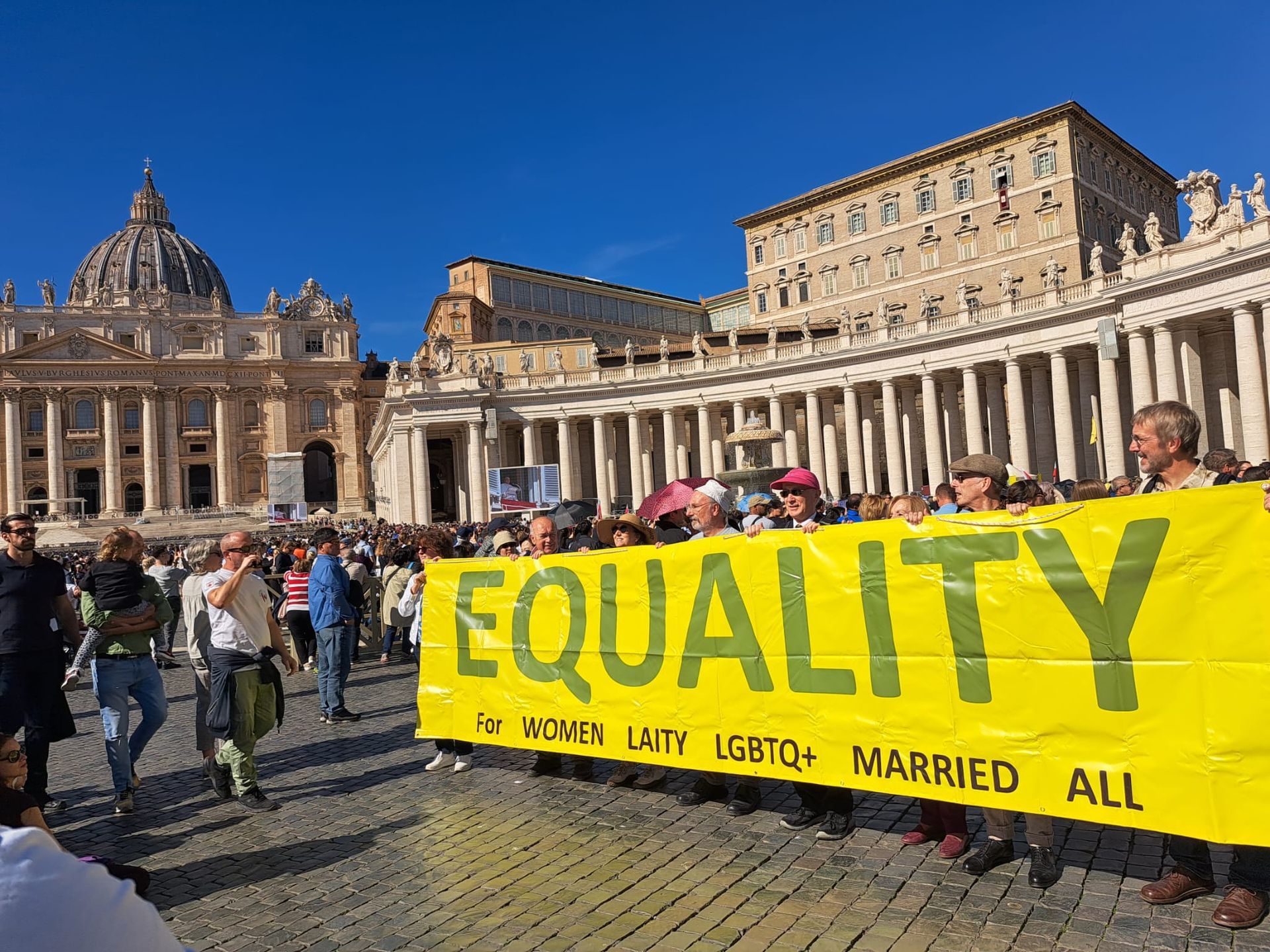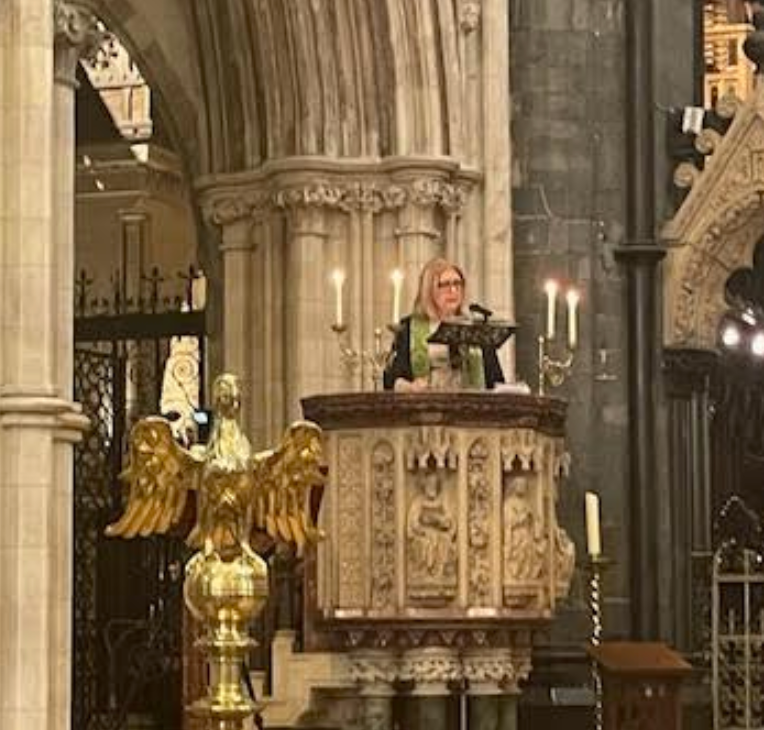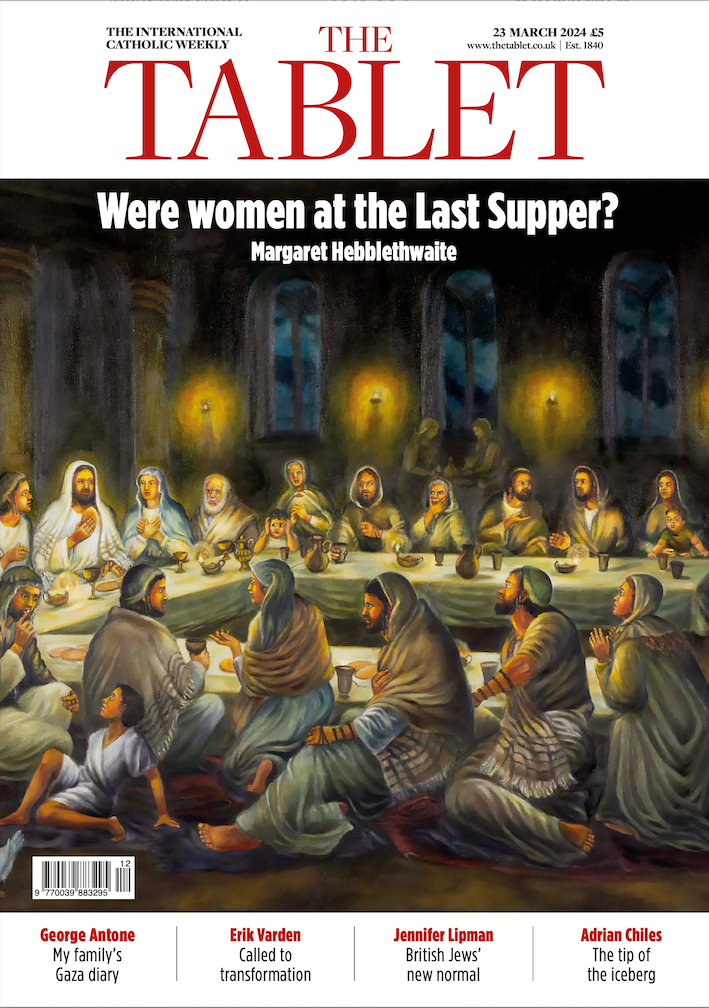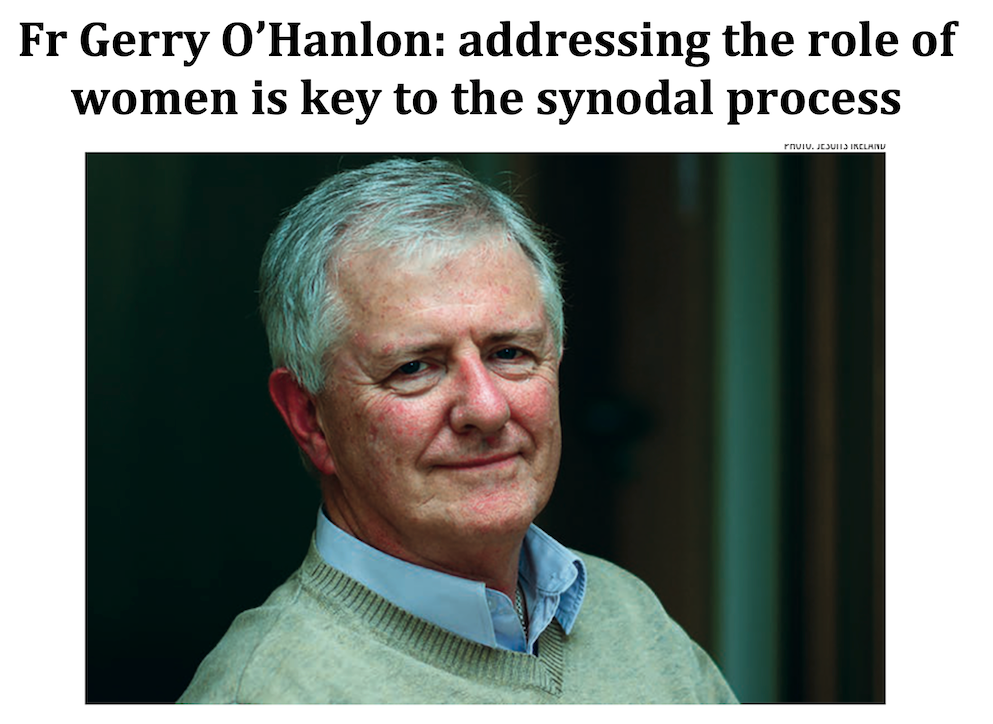Instrumentum Laboris - a major disappointment for Australian Plenary Council
Catholics for Renewal • 18 April 2021
The Agenda for the Plenary Council is now being revised [There are important lessons here for Ireland's National Synodal Assembly]

The Instrumentum Laboris
(IL) or Working Document is the latest product of the Preparatory Stage for the 5th Plenary Council of the Catholic Church in Australia, convened to address the huge existential crisis facing the Church in this nation. The final document will be the Agenda. After that has been approved by the Holy See, the Council will be officially convoked with the 1st General Assembly scheduled for 3-10 October 2021.
The IL’s stated purpose is twofold: to provide an account of what emerged from the national consultations, and to invite the whole Church, especially the Plenary delegates[1], into a deeper discernment and listening to the voice of the Holy Spirit (n. 3).
However, measured against these aims the IL is a huge disappointment. Instead of setting out a clear, concise and coherent blueprint for reform, it is a ground plan for inertia. A tedious, meandering document, it lacks the parrhesia – frankness, lucidity, and boldness – which Australian Catholics were entitled to expect of it.
Its 69-page summary of the 3-year national consultations, including the Final and Diocesan Reports on the 17,547 submissions, the 6 Working Documents on the National Themes of Discernment, the Royal Commission’s Final Report, and The Light from the Southern Cross, has failed to organise this rich harvest of wisdom, insight and analysis into a coherent presentation that should have been the solid foundation for the Plenary’s agenda.
The document has two dominant themes: Mission and Evangelisation. Both are central to what the Church is and must become if it is to be the sign of God’s Kingdom in Australia in this time. However, it provides no clear vision for how these can be realized.
Sadly, the IL’s reading of the signs of the times paints ‘the secular world’ in negative terms. Unlike Gaudium et Spes’s call for the Church to go out and embrace the secular world, the IL portrays it as hostile, threatening, and inimical to its teaching (nn. 47, 59,166). Ironically, it was the secular Royal Commission that taught Australia’s Catholic bishops some basic lessons in morality, decency and responsible citizenship in a modern democratic society.
If the Plenary Council agenda is to embrace genuine systemic reform and renewal, it must include the priority issues
clearly articulated by Australian Catholics in the national consultations and also accept the new governance model set out in The Light from the Southern Cross. These two credible blueprints for reform must not be trivialised or ignored.
It is in these issues, identified by the sensus fidei of Christ’s Australian faithful, that all Catholics, and especially the Council members, can find the surest indication of what God is asking of the Church in Australia now. If the Council planners want deeper discernment, it is to these issues that the faithful and Council members should be invited.
The IL constantly refers to the divinely instituted authority of the episcopal office. Reality would suggest that bishops should adopt a more humble profile, given that their mishandling of clerical child sexual abuse damaged not only themselves, but the episcopal office itself and its claim to legitimacy. Their cover-up of clerical child sexual abuse was judged by one archbishop as ‘bordering on criminal negligence'
while another, in a 2019 BBC interview, said that the bishops’ credibility has been ‘shot to pieces’.
At ordination bishops are commissioned to teach, to govern and to sanctify. In Australia over many decades, their efficacy in these roles has been unsatisfactory. Large numbers of Australian Catholics have not ‘received’ many of the bishops’ moral teachings - e.g. artificial birth control, same-sex marriage, assisted dying - and have disengaged from the institution and the sacraments. Many others have become fringe dwellers
who await the re-emergence of a more Christ-like Church.
Everyone knows that the Church in Australia needs a major overhaul of its governance, culture and structures and the IL acknowledges that a Christ-centred Church will witness to the Gospel values of inclusion, equality, transparency, accountability and synodality. However, Archbishop Coleridge’s promise in 2016 that “everything must be on the table’ has been frequently undermined by bishops insisting that certain matters are ‘beyond our competence’. Now, the IL insists that ‘Council delegates will need to distinguish which matters are beyond the competence of a Plenary Council’ (n. 110). An example is the ordination women, one of the top priorities in the submissions. This is a ruse, and a blatant attempt to gag discussion at the Council assemblies. It does not point to an ‘open’ agenda.
To ‘provide for the pastoral needs of the People of God’ the Plenary Council can ‘decide what seems opportune for the increase of faith, organize common pastoral action, and regulate morals and common discipline’ (c. 445). Many of the most pressing reforms can be implemented immediately. Others, if necessary, can be referred to the Holy See, especially if they require changes to Canon Law. But even those doctrinal and disciplinary issues which are beyond the competence of the Plenary Council still have to be ‘on the table’ for discussion and discernment, and any firm conciliar conclusions referred to the Holy See for comprehensive, transparent review by official bodies such as the International Theological Commission, the Pontifical Biblical Commission and the Synod of Bishops. Eminent theologian Richard McBrien observed: "When we study history, we realize that there is very, very little about the church that cannot change."
Catholics for Renewal finds this Instrumentum Laboris a major disappointment. It takes us nowhere in particular, and certainly not towards an agenda that will achieve genuine reform and renewal in our Church. It is not the impetus needed to get the Church in Australia ‘back on mission’.
[1] The official Statutes and Norms of the Council refer to those called to the Plenary Council as ‘members’, not ‘delegates’.
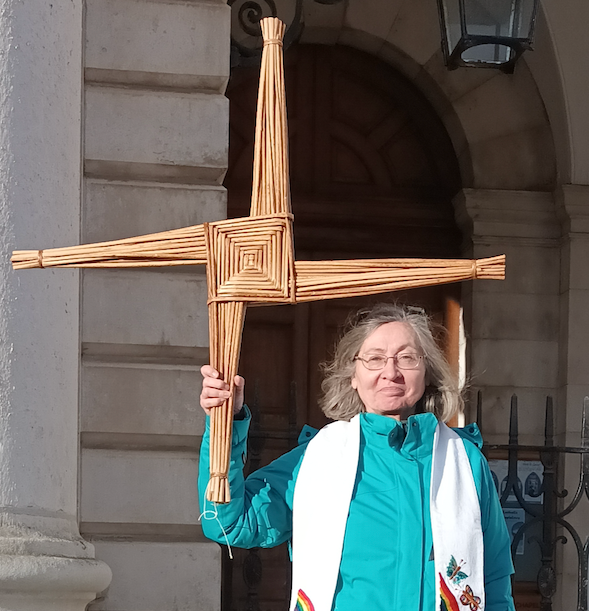
A reflection by Soline Humbert for the Women’s Ordination Conference Retreat “Hidden Springs, Holy Radiance” 9 February 2025 [ see recording on YouTube https://www.youtube.com/watch?v=szP5h1kzEsU ] We have been gathering over the past three days in the presence of Brigid of Kildare, and I am sure she has brought gifts to each one, for my experience is that she is attentive to our needs and very generous with her help. At this stage I just want to share some of my own life journey with Brigid. I first encountered her in 1969 when I came from France to Ireland as a child on holidays to learn English. I went to a small Irish town called Tullow. As it happens it was in Tullow that on the first of February 1807 the order of nuns of St Brigid which had been dissolved at the Reformation, had been refounded by a far-sighted bishop. Symbolically an oak sapling had been brought from Kildare Town, from the church of the oak, to Tullow and planted in the grounds of the Brigidine convent where I took English classes. It was by then a majestic oak tree. It still stands to this day. Coincidentally and somewhat ironically, 1969 was also the year that Pope Paul the 6th removed St Brigid, along with 193 other saints, from the Universal Roman Calendar of saints. The reason being that there wasn’t enough evidence for her existence! That despite the fact she was the most mentioned Irish person in the writings of several centuries after her death... What was true was that her flame had been somehow extinguished, and her importance diminished in a deeply clericalised and patriarchal church as Ireland was at the time. She was in the shadow of St Patrick and very much the secondary patron Saint, reflecting the secondary position of women in general. But change was slowly happening. Having discovered in myself a vocation to the priesthood I eventually co- founded a group for women’s ordination and launched a petition to open all ministries to women in February 1993. At the very same time, which I consider providential, the flame of St Brigid was rekindled by the Brigidine sisters in Kildare Town. Women were stirring after a very long wintertime in the church and in society and becoming more fiery. Brigid with her torch was blazing a way for equality. It is then, and only then, that I came across the story of her ordination as a bishop and I remember my astonishment for I had never read anything like that before, or since, for that matter. Of course, while this fact was mentioned in many of the lives of Brigid going back to the first millennium it had been quietly left out of the pious descriptions of her life which were fed to the people. The way the story is recounted makes it clear that her ordination was considered to be very much the doing of the Holy Spirit. Objections about her gender were voiced but powerless to negate what God had done. It reminds me very much of the passage in the Acts of the Apostles when St Peter is amazed to discover that the Holy Spirit has descended on Cornelius, a gentile, and which leads him to conclude that “God has no favourites”. Brigid’s episcopal ordination at the hands of a bishop overcome by the Spirit is also a powerful affirmation that when it comes to ordination God has no favourite gender. Her ordination’s divine origin shows that Brigid was a bishop because God ordained it, and her. A very subversive truth our Church has yet to learn... As we campaigned for women’s ordination we made sure that this episode from Brigid’s life was brought into the open, again and again, despite clerical efforts to dismiss this dangerous historical memory as pure legend and keep it buried. Interestingly when the Anglican Church of Ireland, (Episcopalian) ordained their first woman bishop in 2013 it was to the diocese of Meath and Kildare! A very symbolic act. I have often gone to St Brigid’s Well in Kildare, a little oasis of peace, to spend some time with Brigid and re-source myself by the gently flowing water. After the First Women’s Ordination Worldwide Dublin international Conference in 2001 I went there again on the anniversary of my baptism and I hung my purple stole on a tree overlooking the well. I had worn that stole for many years as a sign of waiting. From now on I would wear stoles of other colours. And a few years ago, I found myself back in Tullow, as a guest speaker at the invitation of the Brigidine sisters for an international celebration. It was very moving to be able to speak of my calling to priesthood in the place where the order of St Brigid had been revived and where I had first come as a child half a century beforehand! That day I sensed very much the presence of Brigid the bishop and I was filled with joy and gratitude. In some ways we can say St Brigid has risen up and is leading the way for women to rise up. Although a woman in what was very much a man’s world and a man’s church, Brigid exudes a remarkable confidence in her being, in her words and in her actions. No doubt that confidence was rooted in a deeply contemplative life nurtured by prayer. “From the moment I first knew God, I have never let him out of my mind, and I never shall”. She embodies the authority which stems from being filled by the Spirit and a leadership at the service of peace, justice, hospitality to the strangers, charity to the poor and marginalised, reconciliation, healing and harmony with creation and care of the earth. The two Scripture readings we have just heard are very fitting for she was renowned for her practical care and generosity to those in need or suffering. Like Christ, she went around doing good. I must not be the only one who saw and heard in Episcopalian bishop Mariann Budde’s recent words the spirit of St Brigid as she used her God- given authority to plead for mercy for the people in vulnerable situations in the face of unbounded cruelty. Brigid is a bold, dynamic presence. She is said to be a woman of the threshold, of liminal places, and she is a sure guide for our times when we also are in transition on the threshold of a new church and a new world too. She calls to us to step boldly forward with our torches burning brightly, bringing the light and warmth of God’s Love to a world gone cold in the grip of darkness and despair. Her life reminds us that with “God nothing is impossible” and to expect miracles. I shall end on a light- hearted note: I went on pilgrimage to St Brigid’s Well and Solas Bhride in Kildare last Tuesday to prepare for this retreat. On the way back from the well and driving through the wide expanse of the Curragh where thousands of sheep graze freely I started seeing a multitude of rainbows. It reminded me of one of the many whimsical stories about Brigid: Caught in a rainstorm, she hangs her mantle on a sunbeam to dry. Dripping from its edges, colourful rainbows form in the water droplets, and her mantle is ‘bright’ with colour. Lady, from winter’s dark, Star of Imbolc, rise! Dance across our threshold: Scattering warm laughter Seeds of hospitality, Tolerance, forgiveness! Return again to the folk: You the Spring we yearn for! (Tom Hamill)
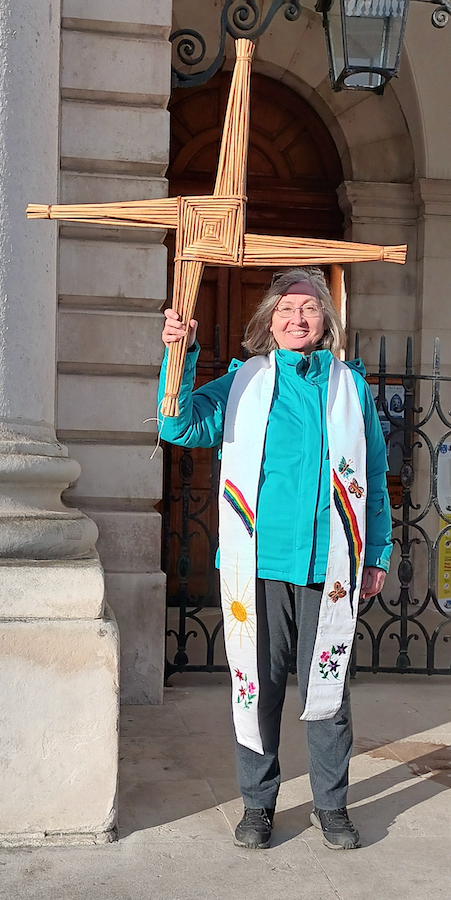
Women are a problem for the Catholic Church, an institution with ingrained misogyny - Soline Humbert
Papal plámás is no substitute for an end to discrimination against women



